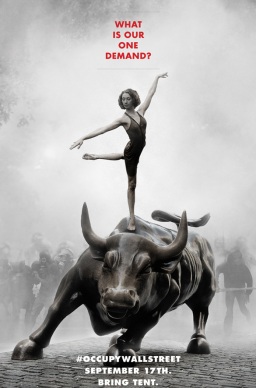SBI - IBPS - Model question paper Clerk PO(Banking Industry and Finance Only ) - 2 (Sample question paper) with answers:
This will be useful in SBI, IBPS clerical and probationary officer(PO) exams...
Practice these papers and do well in the exams... Good luck... Enjoy the exam...
1. RBI was nationalised in the year_____
3. 1949
2. The Imperial Bank of India was nationalised and was renamed as SBI in the year____
2. 1949
3. The first Regional Rural Bank (RRB) was established on October 2, _____
3. 1975
4. How many RRBs are there in India ?
1. 82
5. DRT stands for _____
2. Debt Recovery Tribunal
6. Which of the following is not a fully owned subsidiary of RBI ?
4.National Bank for Agriculture and Rural Development (NABARD)
7. In which of the following institution has RBI got majority stake ?
4.National Bank for Agriculture and Rural Development (NABARD)
8. To manage day to day liquidity in the banking system, RBI has instituted a system called LAF. What is LAF ?
- Liquidity Adjustment Facility
9. To manage liquidity, RBI started MSS. What is MSS ?
3.Market Stabilisation Scheme
10. Four note printing presses are in operation in India. Which one of the following is not among them?
a. Dewar in Madhya Pradesh b. Nasik in Maharashtra c. Mysore in Karnataka d. Salboni in west Bengal e. Balasore in Odisha
5. e
11. Four coin mints are in operation. Where cannot we locate one ?
2. New Delhi
12. Ways and Means Advances (WMA) is a short term credit scheme available from RBI to _____
3. State Government
13. Pick out the incorrect combination among the following.
a. FCNR - Foreign Currency Non Resident
b. NRE - Non Resident External
c. NRO - Non Resident Ordinary
d. NRNR - Non Resident Non Repatriable
e. NRE - Non Resident Expatriate
5. Only e
14. The minimum amount to be remitted through RTGS is ?
2. Rs. 2 lakh
15. When you transfer fund electronically, Indian Financial System Code (IFSC) must be mentioned. IFSC has ______ characters.
3. 11
16. RBI enables National Electronic Fund Transfer (NEFT) as a batch settlement. NEFT operates in batches every ______
- 1 hour
17. Which of the following is not possible through an ATM of a bank ?
a. Account information seeking
b. Cash deposit
c. Regular bills payments
d. Purchase of recharge vouchers for mobile phone
e. Mini / Short statement
f. Loan account inquiry
g. Quick dispersal of loans
2. All except f
18. HNI stands for ______
- High Net-worth Individuals
19. While reading newspapers, we may come across new items that say 'an SPV is constituted'. What is SPV?
2. Special Purpose Vehicle
20. 'The guilt edged market' refers to market for
4. Government and semi Government securities
21. ______ Trading of Registered Interest and Principal of Securities (STRIPS) are basically zero-coupon securities where investor receives a payment at maturity only.
3. Separate
22. The Unit Trust of India (UTI) was established in the year______
2. 1963
23. One unit of Unit Trust of India will cost
2. Re. 10
24. Which of the following cities is called financial capital of India ?
- Mumbai
25. The Bombay Stock exchange is located at
26. How many regional stock exchanges are there in India?
3. 19
27. The National Skill Development Council is chaired by
- Prime Minister
28. Pick out the incorrect combination.
a. ALM - Asset Liability Management
b. CBLO - Collateralised borrowing and Lending Operation
c. ECB - External Commercial Borrowing
d. FMCG - Fast Moving Consumer Goods
- None is incorrect
29. ULIP stands for
2. Unit Linked Insurance Plan
30. LLP stands for
- Limited Liability Partnership
31. What is meant by 'Indian rupee is appreciating' ?
a. The purchasing power of the rupee is declining
b. The exchange rate of rupee is going up
c. The purchasing power of rupee is going up
3. Only b and c
32. Which state passed a bill for regulating micro finance institutions ?
4. Andhra Pradesh
33. Which of the following has launched Bank on Bike initiative to cover villages untouched by banking facilities so far ?
4. SBI
34. Which of the following pairs of India's public sector banks and their head quarters are correctly matched ?
a. Punjab National Bank - New Delhi
b. Alahabad Bank - Kolkata
c. Bank of India - Mumbai
4. a, b and c
35. China emerged as the world's second largest economy in 2010, overtaking _____
4. Japan
36. Which of the following has launched the 'Everywhere Teller Machine' (ETM) in India ?
4. Axis Bank
37. According to the RBI, branches serving population of ______ and above are classified as metropolitan branches.
2. 10 lakh
38. Which foreign bank has the highest number of employees in India ?
3. Standard Chartered Bank
39. The amount of money that can be loaded on mobile phones (mobile wallet).
4. Rs. 50000
40. Which public sector bank is associated with the launch of India's first Grameen Bank ATM Card in association with Varanasi based Kashi Gomti Samyut Grameen Bank and National Payments Corporation of India (NPCI)?
4. UBI





